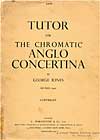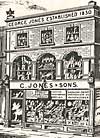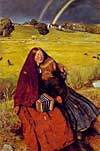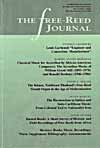Anglo Concertina
Directory
Resources in the Concertina Library
for the Anglo concertina.
-
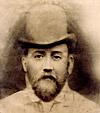 Charles Jeffries: the Man and His Family
Charles Jeffries: the Man and His Family
-
by Chris Algar, Stephen Chambers, Robert Gaskins, David Lee, Randall C. Merris, and Wes Williams
-
New information about Charles Jeffries and all of his family that participated
in the concertina making business. Contains the first known pictures of Charles
and Mary Ann Jeffries, and reproductions of birth, marriage, and death certificates
where known. Summary table of Jeffries descendants. Brief descriptions of the
addresses where Charles Jeffries lived and worked, with maps of the Praed Street area,
White Lion Passage, and the Kilburn area. Based on information from members of
the Jeffries family.
-
Posted 15 November 2005
-
» read full article
-
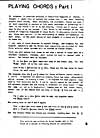 Playing Chords [for English, Anglo, and Maccann Duet]
Playing Chords [for English, Anglo, and Maccann Duet]
-
by Brian Hayden
-
"I would like to explain the system that I use when teaching
players about chords, their structure, and placement. Chords are
what I am most requested to explain at folk music workshops or
gatherings as I tend to use chords a lot in my own playing." (From
the introduction.)
Includes a novel notation for chords which is used elsewhere on this website.
As published in Concertina Magazine
(Australia) in three parts, 12-14 (1985), 12:5-7,
13:12-14, and 14:8-10; with corrections in 15-16 (1986), 15:14
and 16:1,6,9.
-
Posted 01 March 2004
-
» read full article in pdf
-
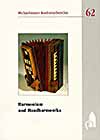 An Annotated Catalogue of Historic European Free-Reed Instruments from my Private Collection
An Annotated Catalogue of Historic European Free-Reed Instruments from my Private Collection
-
by Stephen Chambers
-
A very important paper describing nineteen instruments which illustrate key points in the development of
European free-reed instruments, with large color photographs.
This paper was presented at the 20th Musikinstrumentenbau-Symposium at Stiftung Kloster Michaelstein, held
19–21 November 1999, to coincide with an exhibition of the instruments.
As Published in Harmonium und Handharmonika (Michaelsteiner Konferenzberichte 62), edited by Monika Lustig,
Michaelstein, 2002, pp. 181-194.
-
Posted 15 January 2004
-
» read full article
-
 Concertina.net
Concertina.net
-
by Paul Schwartz
-
The discussion forum on this site is the most popular
spot on the web for news, announcements, and general conversation about concertinas
of all types. Other contributed articles focus especially on
Anglo concertinas and the Irish music often played on Anglos, but
there are historical essays and photographs
dealing with concertinas of all types. Also a
large database of tunes (sheet music and MIDI sound files), and reports
of people's experiences in buying concertinas.
-
-
Posted 15 November 2001
-
» go to website
-
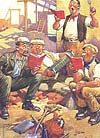 “Faking It”
“Faking It”
-
by Roger Digby
with a section on the Duet Concertina by Kurt Braun
-
Subtitled "A guide to selecting appropriate chords
on the Anglo and Duet Concertinas".
Explains how to play the concertina from a “fake book” or “busker’s book”,
which gives a melody line and an indication of the chords for accompaniment. 16pp.
Originally published for the ICA, 2004.
-
Posted 15 August 2005
-
» read full document
-
 “Faking It”: a dozen examples
“Faking It”: a dozen examples
-
by Roger Digby
-
Musical examples to accompany the web publication of “Faking It”.
Twelve tunes that are common in sessions and include most of the dance rhythms,
six tunes in C and six in G as the most common Anglo keys. Each tune is represented
by the music (printed without chords), and also by a sound file of Roger Digby
playing the Anglo concertina as you might hear at a casual session.
Originally presented at a workshop for the
East Anglian
Traditional Music Trust, 2004.
Tunes include: Blaydon Races, Dannish Waltz, Dorset Four Hand Reel,
Family Jig, Galopede, Greensleeves, Harry Cox’s Schottisch, Keel Row,
Shepton Mallet Hornpipe, The Man in the Moon, Three Around Three, and Winster Galop.
-
Posted 15 August 2005
-
» read full article
-
 Anglo File
Anglo File
-
by Roger Digby
-
There is insufficient evidence to address the question, ‘Is
there a traditional English style of Anglo playing?’ The situation might
have been different if Kilroy, Kimber and Tester had more in common, but
they don’t. What these three do have in common is the way that their playing
reflects their background and context.
Originally published in English Dance and Song
(magazine of EFDSS, the English Folk Dance and Song Society),
vol. 64, no. 2 (Summer 2002), 6–7.
-
Posted 15 August 2005
-
» read full article
-
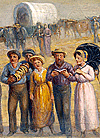 A Brief History of the Anglo Concertina in the United States
A Brief History of the Anglo Concertina in the United States
-
by Dan Worrall
-
In the United States the Anglo-German concertina was very popular during the middle and late
nineteenth century, but by the early twentieth century it had all but vanished from American popular
culture, becoming only a Hollywood symbol of “the old days”.
After the revival of interest in traditional music and in concertinas from the 1960s the Anglo has
once again had some popularity in the United States, but without connection to any tradition of its
earlier widespread use in America. This paper attempts to reconstruct a basic history
of the Anglo concertina in the U.S. by using nineteenth-century tutors, newspaper mentions,
anecdotes from family histories, and archival photographs.
Topics discussed include the early use of German concertinas in the Eastern U.S.,
the use of Anglo concertinas by Mormon and other western pioneers, use during the War Between the States,
use by African-Americans, use in nautical contexts, use by immigrant and other ethnic groups, and
use by the American branch of the Salvation Army. Some previously unpublished photographs are included.
-
Posted 15 April 2007
- » read full article
-
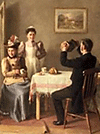 Notes on the Beginnings of Concertina Playing in Ireland, 1834–1930
Notes on the Beginnings of Concertina Playing in Ireland, 1834–1930
-
by Dan Worrall
-
Although the Irish are known for their long folk memory, the story of how of concertina
playing began there has been largely lost; it is often tagged to a threadbare tale of
mariners bringing them up the Shannon estuary to Clare. This paper reconstructs its history
by using period accounts from newspapers, books and family histories to document the social
gatherings where it was played, and the vendors who sold it. The Anglo-German concertina was
enormously popular all across Ireland during its heyday, amongst people of nearly all social and
economic groups.
The concertina is a much-favored instrument in County Clare, Ireland, and
a few players there bridge the gap in time between the instrument’s heyday in the
late nineteenth/early twentieth century and the current revival, which began in the 1970s.
Its later concentration in Clare was not a result of how it arrived, but
of local cultural and economic factors that aided its barest survival there while it was
completely dropped—and all but forgotten—elsewhere in the country.
-
Posted 15 November 2007
- » read full article
-
 Wheatstone Anglos with Serial Numbers 50,000+
Wheatstone Anglos with Serial Numbers 50,000+
-
by Robert Gaskins
-
Between 1938 and 1974 Wheatstone & Co.
manufactured concertinas in two parallel series of serial numbers;
Englishes and Duets were given numbers #3XXXX, and Anglos were given
numbers #5XXXX. During these 37 years Wheatstone manufactured about
2,129 Englishes and Duets, with serial numbers from about #34955
through #37083, and some 9,498 Anglos, with serial numbers from #50001
through #59498. Yet, for unknown reasons, this vast population of
late Wheatstone Anglos with #50000+ numbers are not seen nearly as
often as one would expect.
The original version of this article appeared on the net at
concertina.net,
and at
Concertina FAQ.
-
Posted 23 June 2001
-
» read full article
-
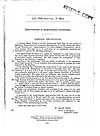 Improvements in Anglo-German Concertinas (1884)
Improvements in Anglo-German Concertinas (1884)
-
by George Jones
-
British Patent No. 9314 of 1884, 23 June 1884 with two figures. 2 pages.
Jones describes a 42-key Anglo concertina, which is a
fully chromatic Anglo “ to enable the performer to play music in every key”,
based on the older diatonic 10-key and 20-key German models.
-
Posted 15 January 2004
-
» read full document in pdf
-
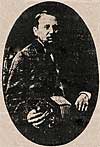 Recollections of the English Concertina, from 1844,
by George Jones, born February 29th 1832
Recollections of the English Concertina, from 1844,
by George Jones, born February 29th 1832
-
by George Jones
-
A full transcription of a manuscript now in the British Library, catalogued there as:
Additional Manuscript 71124 Q,
Recollections of the manufacture of the English concertina from 1844, by George Jones; [1912].
Presented by F. E. Butler, Esq., grandson of George Jones, 29 Aug. 1988, and incorporated in 1993.
ff. 331 x 207mm.
As published in Concertina Magazine, 13 (Winter 1985): 4–5, and
14 (Spring 1985): 4–7. Previously published (with heavy editorial additions) in
FreeReed: The Concertina Magazine, No. 16 (November 1973): 14–20.
A link is provided to PDF scanned versions of both publications.
-
Posted 15 January 2004
-
» read full article
-
» read 1985 publication in PDF
-
» read 1973 publication in PDF
-
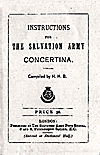 Instructions for the Salvation Army Concertina (1888)
Instructions for the Salvation Army Concertina (1888)
-
by Herbert H. Booth
-
The earliest known concertina tutor for the Salvation Army, compiled by Herbert H. Booth,
son of Salvation Army founder William Booth. This booklet is devoted exclusively to chording
on the Anglo concertina. The title’s phrase “Salvation Army concertina” refers to
an Ab/Eb concertina with 26 keys, the Salvation Army’s standard issue into the
twentieth century. The tutor provides I-IV-V chords (the “three chord trick”) for a number
of keys; the chords are shown as played with two hands without the melody,
presumably as an accompaniment for singing or for other instruments playing melody.
(Scan from Stephen Chambers, description by Randall C. Merris.)
London: Published by The Salvation Army Bookstores, 8 and 9, Paternoster Square, E.C., 1888.
Price 3d. 16pp. including covers.
-
Posted 15 April 2007
-
» read full document in pdf (or right-click to download)
-
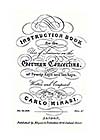 Earliest Known English-Language German Concertina Tutor: Minasi’s “Instruction Book” 1846
Earliest Known English-Language German Concertina Tutor: Minasi’s “Instruction Book” 1846
- by Randall C. Merris and Dan Worrall
-
Carlo Minasi published the earliest known English-language tutor for the German ("Anglo-German") concertina
by 1846 in London.
This publication goes well beyond the basics; in it are instructions not only
for the simple “along the row” melody line style, but also extensive discussions of octave
playing, cross row fingering, and chord accompaniment.
Numerous fully arranged musical selections are included,
almost all in the “English” or “harmonic” style, where chords are played on the
left and melody on the right, more or less as a duet concertina is played.
- Posted 15 August 2005
- » read full article
-
 Earliest Known German Concertina Tutor: Höselbarth’s “Anweisung das Accordion zu spielen”
Earliest Known German Concertina Tutor: Höselbarth’s “Anweisung das Accordion zu spielen”
-
by Stephen Chambers and Dan Worrall
-
Johann Gottlieb Höselbarth published the earliest-known tutor for the German concertina in Chemnitz Germany, in the late 1830s
or early 1840s.
All of the music in this tutor is in the key of C, and several of the tunes in the Appendix
include modulation between the keys of C and G. Chords are typically rich, with up to four notes played at once on the left hand.
All of the tunes are in the so-called harmonic style, where the melody is played on the
right hand, and the chorded accompaniment is played (mostly) on the left. This and an
early tutor of 1846 published in London by Carlos Minasi (see elsewhere on this site)
indicate that the harmonic style of playing dates back to the earliest days of the German
concertina.
-
Posted 15 August 2005
- » read full article
-
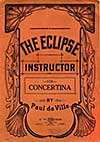 Back to the Future: De Ville’s The Concertina and How to Play It
and Other Tutors
Back to the Future: De Ville’s The Concertina and How to Play It
and Other Tutors
- by Randall C. Merris
-
Paul de Ville's tutor (1905) is one of the most widely available sources
of basic instruction and tunes for the Anglo concertina. It
has links to both earlier and later periods; most of its tunes and
other material were taken from earlier publications, and most of its
contents reappeared seventy years later in a tutor which is still available
for purchase.
- Posted 15 February 2003
- » read full article
-
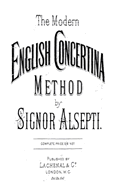 Instruction Manuals for the English, Anglo, and Duet Concertina: An Annotated Bibliography
Instruction Manuals for the English, Anglo, and Duet Concertina: An Annotated Bibliography
- by Randall C. Merris
-
A comprehensive bibliography with more than 200 citations for
concertina tutors that were published from the 1840s to the present.
Separate sections deal with English, Anglo, and Duet tutors.
The annotations contain
considerable historical material on concertina makers, authors and teachers, performers,
and publishers in the UK, US, and elsewhere. The web version incorporates citations for tutors
that have appeared or were located subsequent to the original publication (about 35 more by 2005)
and adds over 100 scanned photographs of tutor covers.
A number of the tutors are available scanned
in full on this website, and these are indicated in the entries.
The original publication was in The Free-Reed Journal 4 (2002): 85-118,
and a PDF version of the printed article is also available online.
- Posted 01 April 2003; last updated 31 August 2005
- » read full article
- » read Part 1, "English Concertina"
- » read part 2, "Anglo Concertina"
- » read part 3, "Duet Concertina"
- » read original article (without updates) in pdf"
-
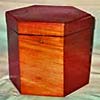 Concertina Cases: New is Often Better
Concertina Cases: New is Often Better
-
by Randall C. Merris
-
Praise abounds for vintage concertinas—e.g., Wheatstones, Jeffries, Crabbs,
and the best-grade Lachenals and Jones—but does not extend to their cases.
At best, the vintage case may be impractical. At worst, it may have negative value,
because improper use may damage the concertina inside.
-
Posted 15 February 2003
-
» go to website
-
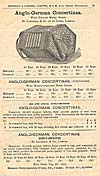 Henshaw & Loebell Concertinas Pricelist circa 1895
Henshaw & Loebell Concertinas Pricelist circa 1895
- contributed by Randall C. Merris
-
Dealer's pricelist from Henshaw & Loebell, Manchester, listing models and prices for German and Anglo concertinas,
including instruments made by Lachenal & Co. and by George Jones. Dated c. 1895 by internal evidence and
by an accompanying dated sales receipt.
- Posted 07 March 2005
-
» read full document in pdf
-
 Wheatstone Anglo Concertina Pricelists
Wheatstone Anglo Concertina Pricelists
- collected by Chris Algar
-
Most of these pricelists were found in old concertina cases. From internal evidence it is
possible to date the lists c. 1910 to c. 1965. These lists contain information about Wheatstone
model numbers and descriptions which are useful to interpret the Wheatstone Concertina Ledgers.
See also English pricelists from Wheatstone.
See also Duet pricelists from Wheatstone.
- Posted 15 February 2003
- » go to directory
-
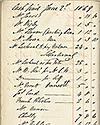 Wheatstone Concertina Ledgers
Wheatstone Concertina Ledgers
-
Directory
-
Historical business records of C. Wheatstone & Co. from
the Horniman Museum in London. Earlier ledgers from the Wayne Archives
contain company sales records from the late 1830s to the 1860s
along with production records from the 1860s to the 1890s and some
early records of wages and other payments. Later ledgers from the Dickinson Archives
contain production records from 1910 to 1974. All surviving ledgers
have been digitized (some 2,300 pages in total) and made available free on the web for
private research.
The same material is also available to buy on an inexpensive CD.
Includes an introduction to the project by Margaret Birley, Keeper of Musical Instruments at
the Horniman Museum, and an article by Robert Gaskins describing in detail how the ledgers
were digitized.
-
Posted 15 June 2003; Updated 15 June 2005
-
» go to directory
-
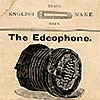 Lachenal Concertina Pricelists
Lachenal Concertina Pricelists
- collected by Chris Algar
-
Most of the earlier "pricelists" here were printed as trade advertisements, in dated serials.
Those actually issued as separate pricelists were found in old concertina cases; from internal evidence it is
possible to date these c. 1890 to c. 1925.
- Posted 07 March 2005
- » go to directory
Do you know another resource that we should include?
Tell us about it.
Reprinted from the Concertina Library
http://www.concertina.com
© Copyright 2000– by Robert Gaskins
|
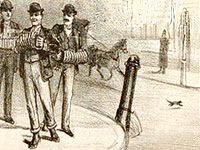
"Midnight Mohawks" (G.B. Shaw)
on the street with Anglos
(from Sheard's Anglo-German
Concertina Tutor, 1901)
Contents
- Directory: Anglo Concertina
- Charles Jeffries: the Man and his Family
by Chris Algar, Stephen Chambers,
Robert Gaskins, David Lee, Randall C. Merris, and Wes Williams
- Playing Chords [for Maccann Duet, Anglo, and English Concertinas]
by Brian Hayden
- An Annotated Catalogue of Historic European
Free-Reed Instruments from my Private Collection
by Stephen Chambers
- Concertina.Net Discussion Forums
- “Faking It”
by Roger Digby
- “Faking It”: a dozen examples
by Roger Digby
- Anglo File
by Roger Digby
- A Brief History of the Anglo Concertina in the United States
by Dan Worrall
- Notes on the Beginnings of Concertina Playing
in Ireland, 1834–1930
by Dan Worrall
- Wheatstone Anglos with Serial Numbers 50,000+
by Robert Gaskins
- Improvements in Anglo-German Concertinas (1884)
by George Jones
- Recollections of the English Concertina, from 1844
by George Jones
- Tutor for the Chromatic Anglo Concertina
by George Jones
- Directory: George Jones & Sons
- Instructions for the Salvation Army Concertina (1888)
by Herbert C. Booth
- Earliest Known English Language German Concertina Tutor
by Randall C. Merris and Dan Worrall
- Earliest Known German Concertina Tutor
by Stephen Chambers and Dan Worrall
- Back to the Future: De Ville’s The Concertina and How to
Play Itand Other Tutors
by Randall C. Merris
- Instruction Manuals for the English, Anglo, and Duet Concertina:
An Annotated Bibliography
by Randall C. Merris
- Concertina Cases: New is Often Better
by Randall C. Merris
- New Essays in Concertina History
by Randall C. Merris
- Louis Lachenal: "Engineer and Concertina Manufacturer" (Part 1)
by Stephen Chambers
- Some Notes on Lachenal Concertina Production and Serial Numbers
by Stephen Chambers
- Henshaw & Loebell Anglo Concertina Pricelist
from Randall C. Merris
- Wheatstone Anglo Concertina Pricelists
from Chris Algar
- Wheatstone Concertina Ledgers
Horniman Museum
- Lachenal Concertina Pricelists
from Chris Algar
|















